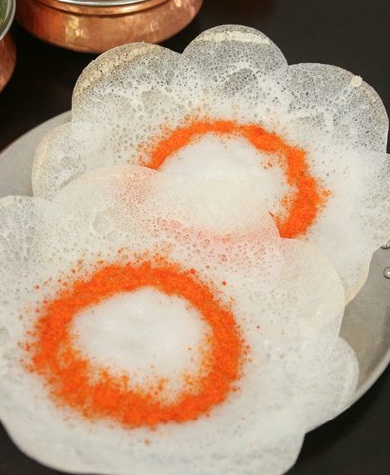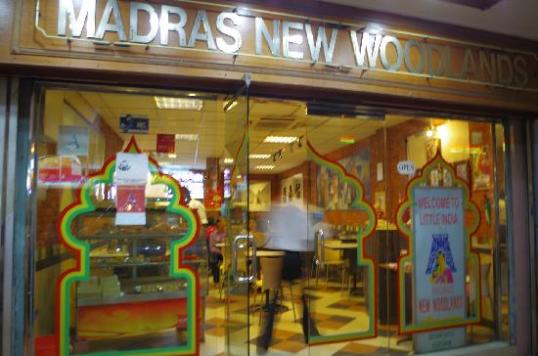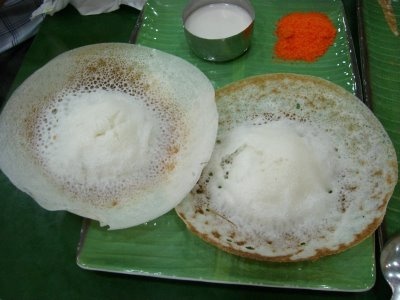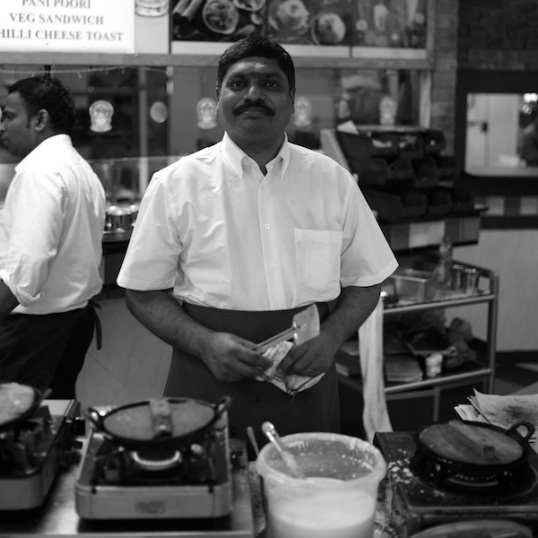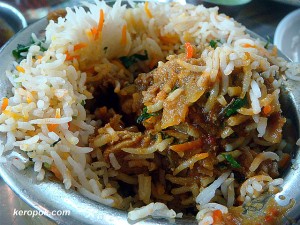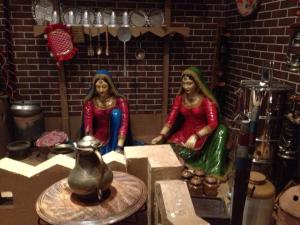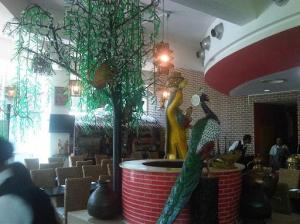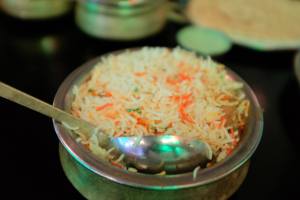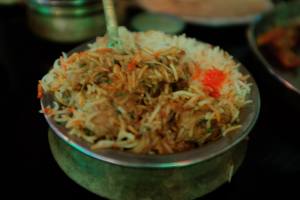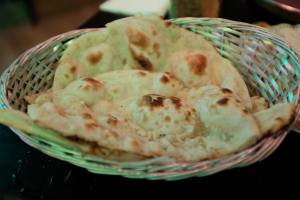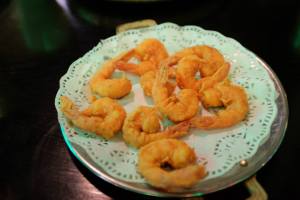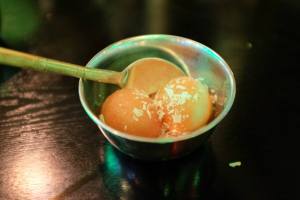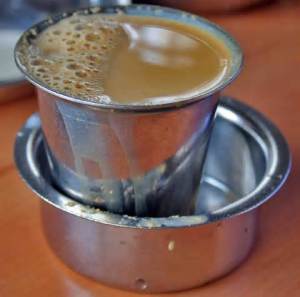Appam-madness.
APP-PAMMM.
Would one have imagined that a simple two-syllable word would hold within it such divinity and heavenly delight?
The appam is essentially a pancake made with fermented rice batter and coconut milk. It is a staple diet and a cultural synonym of the South Indian population, mainly the Tamils (according to Wiki).
In Singapore however, the appam is considered a breakfast or tea-time dish, largely due to the presence of copious amounts of coconut milk and red sugar that go into savouring appam the right way and which Singaporean Indians tend to equate with dessert.
There are two main appam outlets in Tekka. One is Ananda Bhavan along the main Serangoon Road stretch. The other is the Madras New Woodlands restaurant along Upper Dickson Road.
I have tried the appams in both places, and my personal favourite is Madras New Woodlands restaurant. While it is difficult to pin point the difference in taste, because there are no secret ingredients (both outlets prepare their appams in full public view), the appams in Madras New Woodlands have one specialty, or should I say, marketing advantage: they are only available after 3pm. Being complete suckers for invented exclusiveness that makes us feel like we have unearthed some treasure-box that only opens at 3pm, patrons throng the restaurant as early as an hour before, eager to get a table closest to the main attraction located in the middle of the restaurant.
You see, at Madras New Woodlands, they make a big show out of making appam.
Antiquated stove in the centre of the dining area- check.
Antiquated one-cooker stoves- check.
An equally antiquated appam guru manning the stove-check.
Plastic bucket of prized batter- check.
Rows of coconut milk and assorted sugars- check.
Everyone watches eagerly as the chef scoops up a generous amount of batter and lets it fall gently into the pit of a small appam wok. He then covers it with an old, wooden cover and waits patiently, eyes never off the flame which is key in making fresh, perfectly rounded appams. As he lifts the cover off the wok, the waft of fresh coconut fills the air and there is a collective orgasmic gasp that escapes everyone’s lips.
Yes, the appams are ready to be devoured.
Servers are immediately despatched to send over piping hot appams flanked by tiny steel tumblers of coconut milk and red sugar (limitless top-up).
ALWAYS leave the center of the appam for last, and start with the crispy, browned edges- it makes the journey to the soft, coconut-infused center all the more exhilarating. Tear a piece from the sides and dip it in the sweetened coconut milk. When it is sufficiently drenched in milk, dip it in the red sugar. Into your mouth it goes. Enjoy the crunchiness. Feel the milk coat your insides.
The general rule is that the center of the appam needs to be handled like a young virgin- slowly and gently.
Personally, I love teasing open the smooth center just a tiny weeny bit and filling it with coconut milk. I let it sit for a while and nicely absorb the milk, before dunking in the whole soft core in red sugar. Oh, the sheer joy of biting into that sugary lump. Like all the judges love to say in English-translated Iron Chef episodes: the taste just explodes in your mouth!
I also tend to be a little OTT and so, will not leave the table unless I finish drinking up all leftover coconut milk and choke myself silly with any remaining red sugar.
Hey, don’t judge me.
Aside from the fabulousity of the appams, I like the service at Madras New Woodlands, because here, unlike at other eateries, time literally slows to a halt. In the ten years that I have patronised the place, nothing has changed. The same servers and chef, the same time slot for appam, the same decor and the same furniture. A small transistor radio at the bill counter belts out old, nasal 60s Tamil songs, and the cashier- another ancient-looking Keralite woman, bats her eyelids in rhythm to the whining melodies as she tallies your bill. You literally feel as though you have been transported to another time.
Yes, a time when there was no such thing as a queue. You picked a table, you waited for a server to take your orders, you awaited your food, you paid your bill andyou left saying thank-you-bye-bye-god-bless-you. Absolutely no fuss.
In Madras New Woodlands, this is still the blissful situation.
Never in ten years, have I ever seen a long, boisterous queue at Madras New Woodlands. No servers yelling orders from one end of the restaurant to the other. No colour TV playing masala music videos and distracting you from your meals. No raucous laughter.
For some reason, even new patrons are quickly hushed into adapting to the serene atmosphere, and they learn to speak softly, smile and thank the elderly servers, and graciously agree to second helpings.
That is how any amazing dining experience should be- it should cow you into submission.
If you make a trip to Tekka one of these days in the afternoon, and you are not in the mood for a briyani (unfortunately, I am always in the mood for briyani AND appam), why not head down to Madras New Woodlands to submit to some old world Appam charm?
===========================================================================
XOXO,
Bhav

